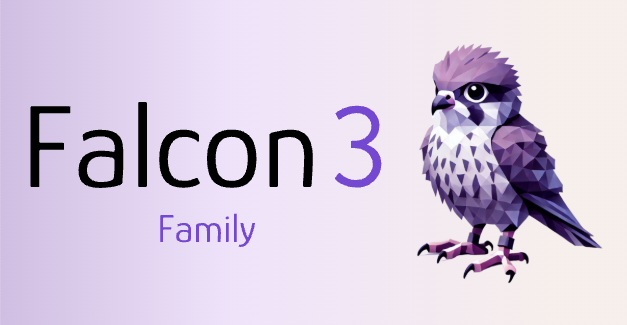language:
- en
- fr
- es
- pt
base_model:
- tiiuae/Falcon3-10B-Instruct
pipeline_tag: text-generation
library_name: transformers
tags:
- falcon3

Falcon3-10B-Instruct-GGUF
Falcon3 family of Open Foundation Models is a set of pretrained and instruct LLMs ranging from 1B to 10B parameters.
Falcon3-10B-Instruct achieves state-of-the-art results (at release's time) on reasoning, language understanding, instruction following, code and mathematics tasks. Falcon3-10B-Instruct supports 4 languages (English, French, Spanish, Portuguese) and a context length of up to 32K.
This repository contains the GGUFs instruction-tuned 10B Falcon3 model.
Model Details
- Architecture
- Transformer-based causal decoder-only architecture
- 40 decoder blocks
- Grouped Query Attention (GQA) for faster inference: 12 query heads and 4 key-value heads
- Wider head dimension: 256
- High RoPE value to support long context understanding: 1000042
- Uses SwiGLu and RMSNorm
- 32K context length
- 131K vocab size
- Depth up-scaled from Falcon3-7B-Base with 2 Teratokens of datasets comprising of web, code, STEM, high quality and mutlilingual data using 1024 H100 GPU chips
- Posttrained on 1.2 million samples of STEM, conversational, code, safety and function call data
- Supports EN, FR, ES, PT
- Developed by Technology Innovation Institute
- License: TII Falcon-LLM License 2.0
- Model Release Date: December 2024
- Quantization: q2_K, q3_K_M, q4_0, q4_K_M, q5_0, q5_K_M, q6_K, q8_0
Getting started
1. Download GGUF models from hugging face
First, download the model from Hugging Face. You can use the huggingface_hub library or download it manually:
pip install huggingface_hub
huggingface-cli download {model_name}
This will download the model to your current directory. Make sure to replace {model_name} with the actual username and model name from your Hugging Face repository.
2. Install llama.cpp
You have several options for installing llama.cpp:
1. Build from source:
This gives you the most flexibility and control. Follow the instructions in the llama.cpp repository to build from source:
git clone https://github.com/ggerganov/llama.cpp
cd llama.cpp
cmake -B build
cmake --build build --config Release
For more information about how to build llama.cpp from source please refere to llama.cpp documentation on how to build from source: llama.cpp build from source.
2. Download pre-built binaries:
If you prefer a quicker setup, you can download pre-built binaries for your operating system. Check the llama.cpp repository for available binaries.
3. Use Docker:
For a more contained environment, you can use the official llama.cpp Docker image. Refer to the llama.cpp documentation for instructions on how to use the Docker image.
For detailed instructions and more information, please check the llama.cpp documentation on docker: llama.cpp docker.
3. Start playing with your model
Run simple text completion
llama-cli -m {path-to-gguf-model} -p "I believe the meaning of life is" -n 128
Run in conversation mode
llama-cli -m {path-to-gguf-model} -p "You are a helpful assistant" -cnv -co
Useful links
- View our release blogpost.
- Feel free to join our discord server if you have any questions or to interact with our researchers and developers.
Technical Report
Coming soon....
Citation
If the Falcon3 family of models were helpful to your work, feel free to give us a cite.
@misc{Falcon3,
title = {The Falcon 3 Family of Open Models},
url = {https://huggingface.co/blog/falcon3},
author = {Falcon-LLM Team},
month = {December},
year = {2024}
}